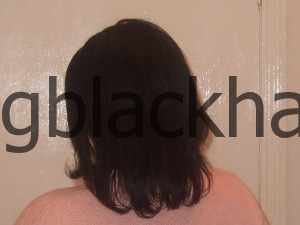
It would be unfair to leave out our relaxed hair sisters. After all its your choice if you remain relaxed! As I was once relaxed – as many naturals were once – I have more than enough years experience! so it’s only right that I share some of those experiences with you all!.
Here is my definitive list on how i cared for my relaxed hair and got it growing….
Shampoo and condition
Hair loves a clean scalp – shampoo and condition every week with quality products..
Using a blow dryer
Reducing the use of the blow dryer on your hair is a good idea because it pulls out moisture and causes the hair to become dry and break. Basically little bits of hair scatter to the floor! A better way is to set the hair on rollers and use a hooded dryer. If you insist on blow drying I would recommend that you use a very good heat protector and use a radial brush to gently blow dry each section of hair.
Using a Marcel Flat Irons
Using a Marcel flat irons is damaging to the hair because the tools heated in the oven have uncontrolled heat. You never really know what the temperature is on the tools and the extreme heat will cause damage. Instead use ceramic irons where the heat can be controlled.
Using pressing comb
Just like a using a Marcel flat irons, using tools such as a pressing comb that is heated on the stove top of the oven is damaging. The heat is uncontrolled and this calls for a high change of heat damage to your hair. Instead use ceramic irons where the heat can be controlled.
Not neutralizing hair after relaxing
A neutralizing shampoo actually stops the relaxer process and brings the hair back to its acid pH balance. Regular shampoo can’t do this and after a relaxer the pH is on the alkaline end of the chart. Failure to neutralize after relaxing leads to extreme breakage and even balding! Some beauticians even decide to condition the hair before neutralizing because the cuticle layer is still open. While this is taking place the relaxer process is still going on. Instead of doing this neutralize your hair immediately after your relaxer then apply the conditioner and sit under a dryer for 20 minutes to allow the heat to reopen the cuticle and allow penetration of the conditioner.
Overlapping relaxer
Applying the relaxer to already relaxed hair can cause the hair to become over processed which causes breakage and hair loss. Many women have this problem when self-relaxing because it is difficult to see the back of the head. It’s best to go get your hair relaxed by a professional. If you can’t go to a professional apply a protective base to your relaxed hair and use a relaxer brush to apply the relaxer to avoid overlapping as much as possible. Try to stretch the relaxer for as long as possible to retain a more healthy condition to your tresses.
No moisturisation
This is the main culprit. A lot of relaxed sisters are not aware of this one you have to be very consistent with this. As soon as I started to moisturise my hair properly I saw growth in six weeks! You will need a cream moisturiser and a spray moisturiser and a oil to seal, coconut , castor or Olive oil. Coat the oil over the moisturiser and cover your head at night with a silk scarf. So in actual fact you are basically moisturising then sealing your hair. Another useful ideal is to wear your hair ‘wet’ on some days – which means ‘moist’; and leave in a protective style like an updo or french pleat. The moisure level in your hair is paramount – and in a few weeks you will notice a marked difference.
Protein treatments
Relaxing weakens the hair – and we forget the hair is now in a weakened state. Do light Protein treatments weekly to keep hair strong, use a protein based treatment that you leave in your hair for 30 mins after shampooing.
Spilt ends
Cut split ends every six months.
Vitamins and multivitamins
There are lots of good vitamins for hair growth – pick one and drink lots of water and don’t to exercise – it all helps!
Let me know how you get on!












